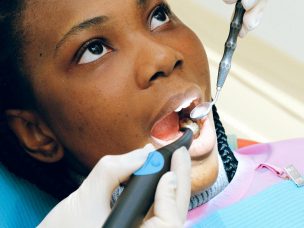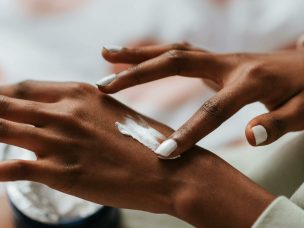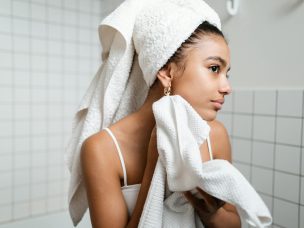Dermatology
Macrophage Polarization and Crosstalk With Other Cells in Hidradenitis Suppurative
M1 polarization of macrophages and their dynamic crosstalk with other cells, such as fibroblasts and lymphocytes, may explain the pathogenesis of hidradenitis suppurativa, providing new therapeutic strategies. Hidradenitis suppurativa (HS) is a chronic inflammatory dermatological condition involving the perianal, axillary, inguinal, and gluteal areas of the body. The disease pathogenesis is based on the dysregulation...
Drug Survival of Biologics in Hidradenitis Suppurativa
A systematic review reports that the drug survival of biologics in hidradenitis suppurativa is comparatively shorter than that of biologics for other dermatological conditions. Drug survival is a measure of the tolerability and efficacy of different treatment regimens. It is described by the proportion of patients who remain on the given treatment regimen over a...
Hidradenitis Suppurativa as a Potential Risk Factor for Periodontitis
Patients with hidradenitis suppurativa were found to have a significantly increased risk of periodontitis compared to both healthy controls and psoriasis patients in a retrospective cohort study. Hidradenitis suppurativa (HS) is characterized by chronic inflammation of the skin, accompanied by systemic symptoms. HS is associated with comorbid conditions in other organ systems. Periodontitis is an...
Impact of Chronic Spontaneous or Inducible Urticaria on Occupational Activity
Chronic spontaneous and inducible urticaria significantly affect work productivity and quality of work, particularly when the conditions remain undiagnosed or poorly controlled, according to the findings of a new prospective study. Chronic urticaria is characterized by erythemato-papular rash associated with transient angioedema. Chronic spontaneous urticaria (CSU) or chronic inducible urticaria (CIndU) has a considerable impact...
Ziziphus Jujube Syrup in Treatment of Antihistamine-Resistant Chronic Urticaria
A randomized controlled trial reports that Ziziphus jujube syrup was an effective add-on treatment for a group of patients with chronic spontaneous urticaria resistant to standard second-generation H1 antihistamines. Chronic spontaneous urticaria (CSU) is an intermittent condition characterized by urticaria and/or angioedema lasting for a minimum of 6 weeks. The first-line management of CSU includes...
Bepotastine Besilate versus Levocetirizine in Chronic Spontaneous Urticaria Treatment
Bepotastine besilate was found to have comparatively greater efficacy than levocetirizine for reducing mean urticaria activity score and improving quality of life in chronic spontaneous urticaria patients in an interventional study. Chronic spontaneous urticaria (CSU) affects approximately 15–20% of the population at least once during their lifetime. Antihistamines comprise the cornerstone treatment approach for this...
Rapid Improvement of Atopic Dermatitis Symptoms With Ruxolitinib Cream
Ruxolitinib cream monotherapy rapidly and significantly improves signs and symptoms of atopic dermatitis such as inflammatory skin lesions and itch reduction, in all areas of the body, according to pooled results of two phase 3 studies. Atopic dermatitis (AD) is a chronic inflammatory skin condition characterized by intense itching and redness, particularly in visible areas...
Real-World Insights on Dupilumab for Atopic Dermatitis
By Roger Mosley The real-life effectiveness and safety of dupilumab in treating moderate-to-severe atopic dermatitis was explored in a recent retrospective study on patients with various comorbidities, including malignancies. The drug may be safe and effective across a diverse patient demographic, reinforcing its potential as a versatile treatment option in clinical practice. Dupilumab proved effective...
Omalizumab in Patients With Chronic Spontaneous Urticaria
A new prospective study reports that omalizumab effectively manages hives in patients with chronic urticaria. Chronic urticaria impacts 0.5–1% of adults and is marked by the appearance of itchy hives with or without angioedema lasting at least 6 weeks. Physical stimuli such as pressure, cold, heat, and vibration induce hives in 20% of patients, categorized...
More Medical News














